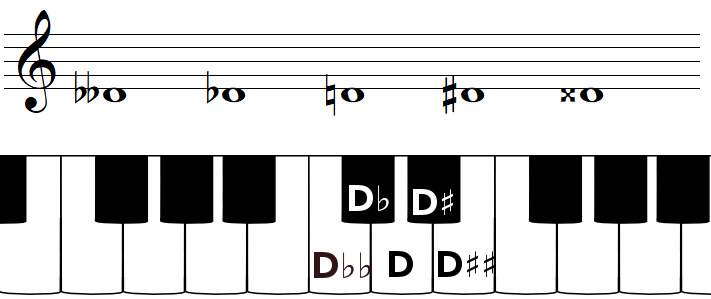D note in treble clef
Here is a D note on a staff 

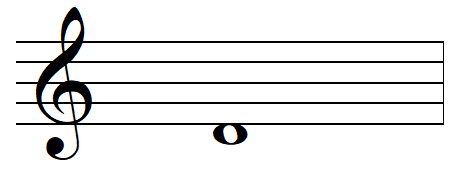
The treble clef set the position of the G note on the second line from the bottom, so a D note can be written just below the first line of the staff (starting from bottom).
D note in bass clef
Here is a D note on a staff with a bass clef:

The bass clef set the position of the F note on the fourth line from the bottom, so a D note can be written on the third line of the staff (from the bottom).
D music note on a piano keyboard
Here are some D notes on a piano keyboard:

how to find the D note on a piano keyboard?
It's very simple! Do you see the black keys? There are two black keys, then three, then two, then three, and so on. The keys for D are between the two consecutive black keys.
The note D as tonic
The D note is the first music note (the tonic) of the D major scale and of the D minor scale :
D major scale

D minor scales
Remember that there are four kinds of minor scales:
D natural minor scale:

D harmonic minor scale

D ascending melodic minor scale

D descending melodic minor scale

The D note as leading tone (leading note)
The D note is the leading tone 

E flat Major scale:

E flat harmonic minor scale:

Frequency in Hertz of the D note (D4)
The scientific pitch notation (also known as American standard pitch notation) symbolizes the following D note as D4:

Depending on the tuning of the musical note A (A4) and in an equal-tempered scale, the frequency of the note D may vary:
If A4 = 440 Hertz: this D note (D4) has a frequency of 293.66 Hz
If A4 = 442 Hertz: this D note (D4) has a frequency of 295.00 Hz
Note: These frequency values in Hertz are valid only for the equal temperament. In other words, these frequencies correspond to the notes on a well-tuned piano.
The D note with different clefs
Obviously, there are several D notes spread out over many octaves. Here are some D notes in different clefs:
Some D notes with a treble clef (G clef)
Here are some D notes with a treble clef:
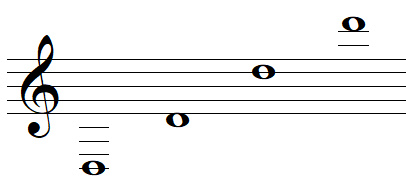
Some D notes with a bass clef
Here are some D notes with a bass clef:
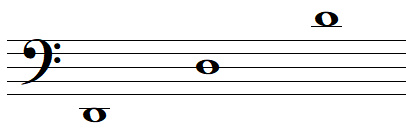
Some D notes with a tenor clef
Here are some D notes with a tenor clef:
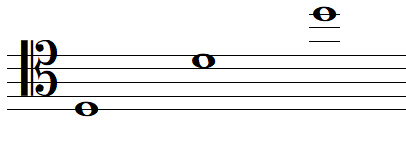
Some D notes with an alto clef
Here are some D notes with an alto clef:
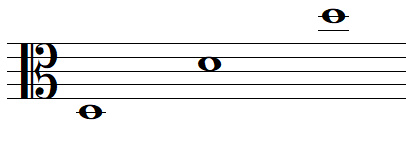
Some D notes with a mezzo-soprano clef
Here are some D notes with a mezzo-soprano clef:
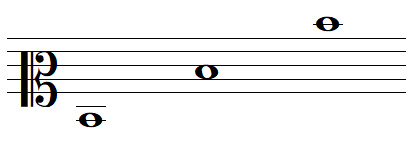
Some D notes with a soprano clef
Here are some D notes with a soprano clef:
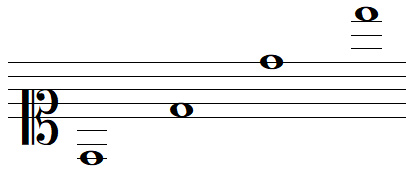
Some D notes with a baritone clef
Here are some D notes with a baritone clef:
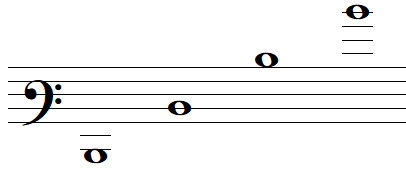
Scales starting with a D note
Here are all major scales and all minor scales starting with a D note:
D major scale:

D natural minor scale:

D harmonic minor scale:

D ascending melodic minor scale:

D descending melodic minor scale:

Enharmonic equivalents
Here are the enharmonic notes of D:
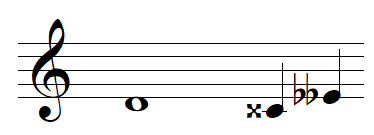
Notes:
- Enharmonic notes are notes that have the same pitch but not the same name.
- C double sharp is enharmonic to D because the double sharp raises the pitch by two half steps 

- E double flat is enharmonic to D because the double flat lowers the pitch by two half steps and because there are two half steps between D and E.
The note D and accidentals
Here are all the possible accidentals you can find with the note D and their positions on a piano keyboard:
